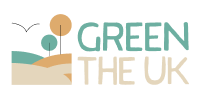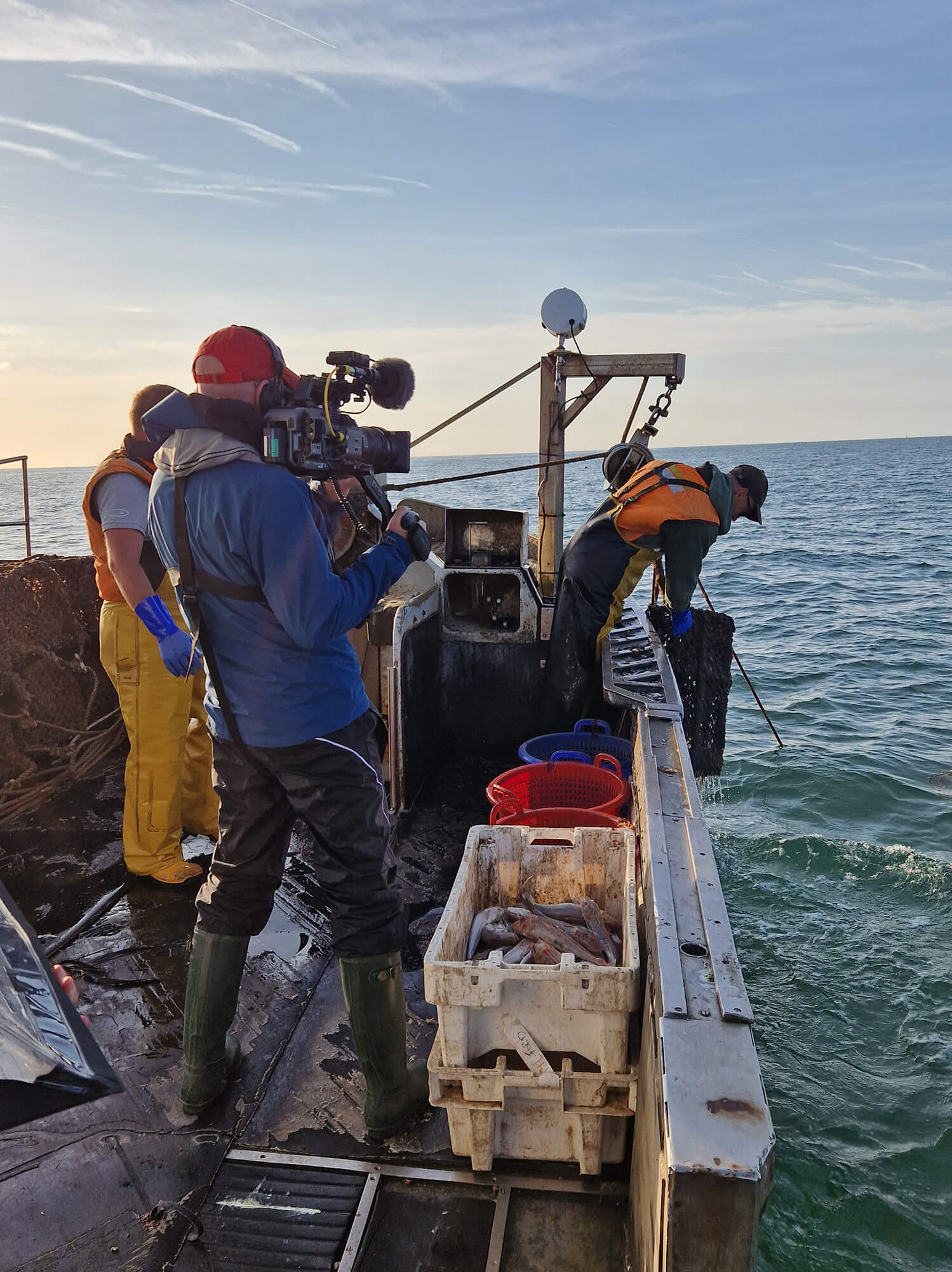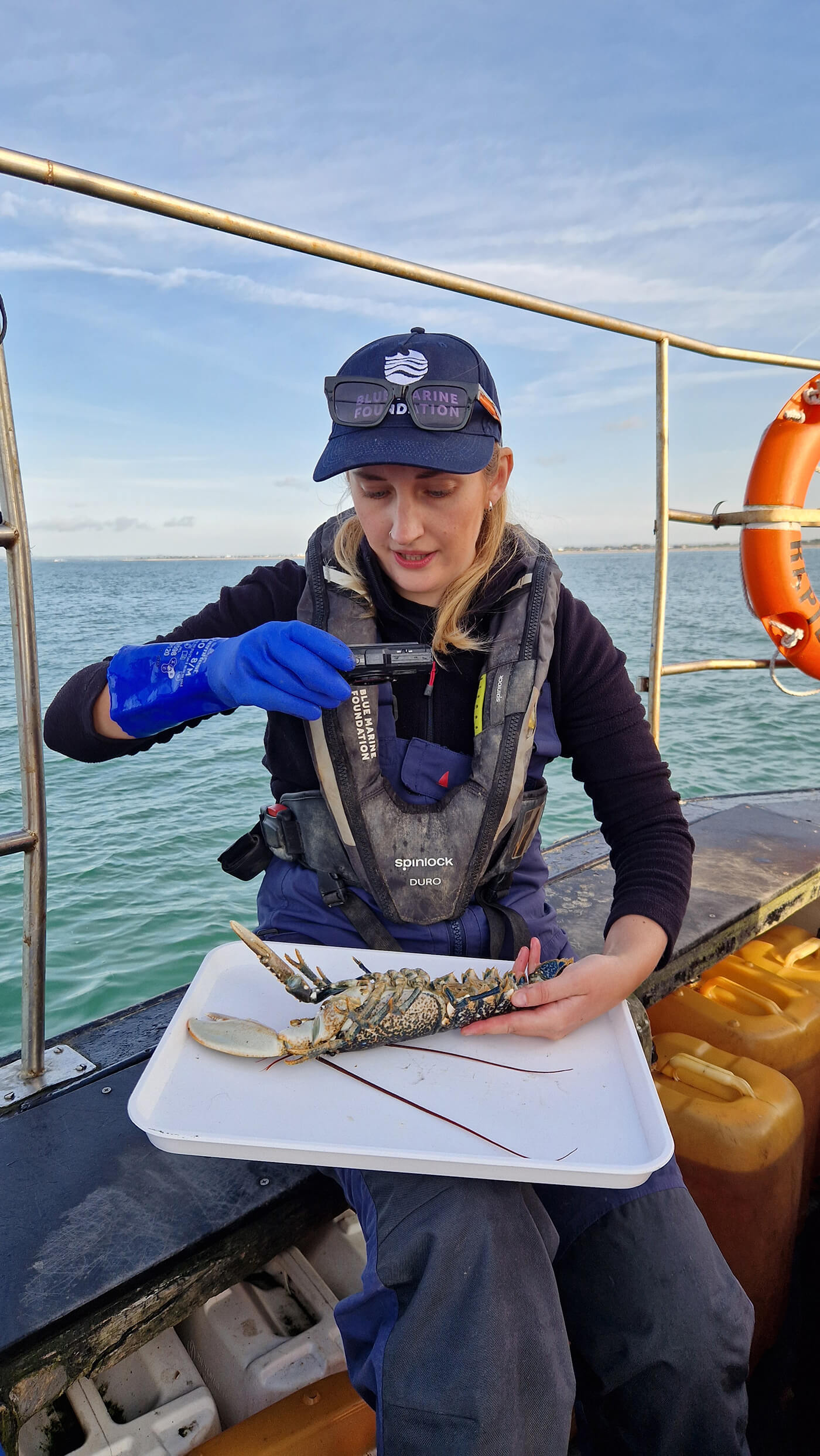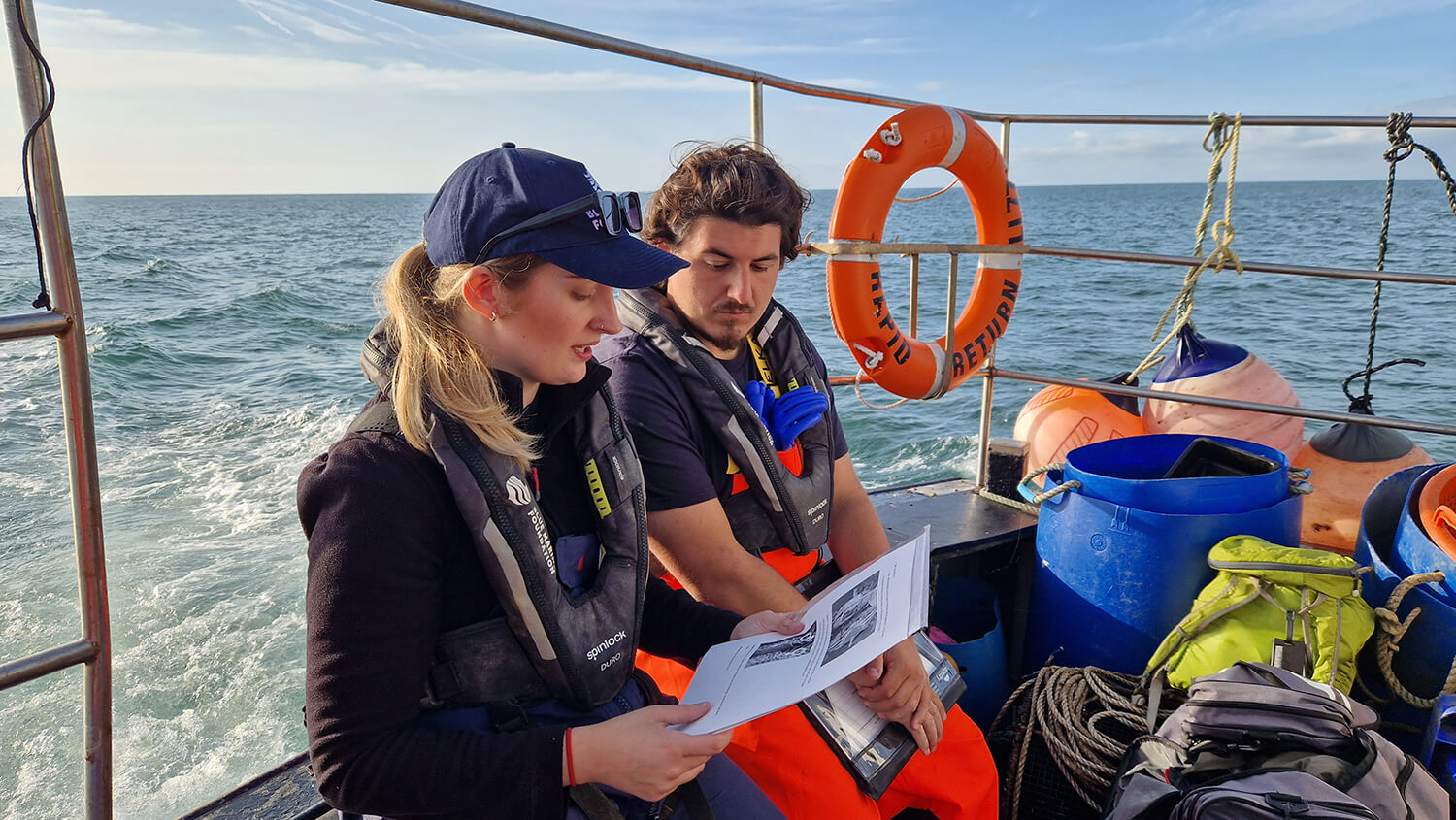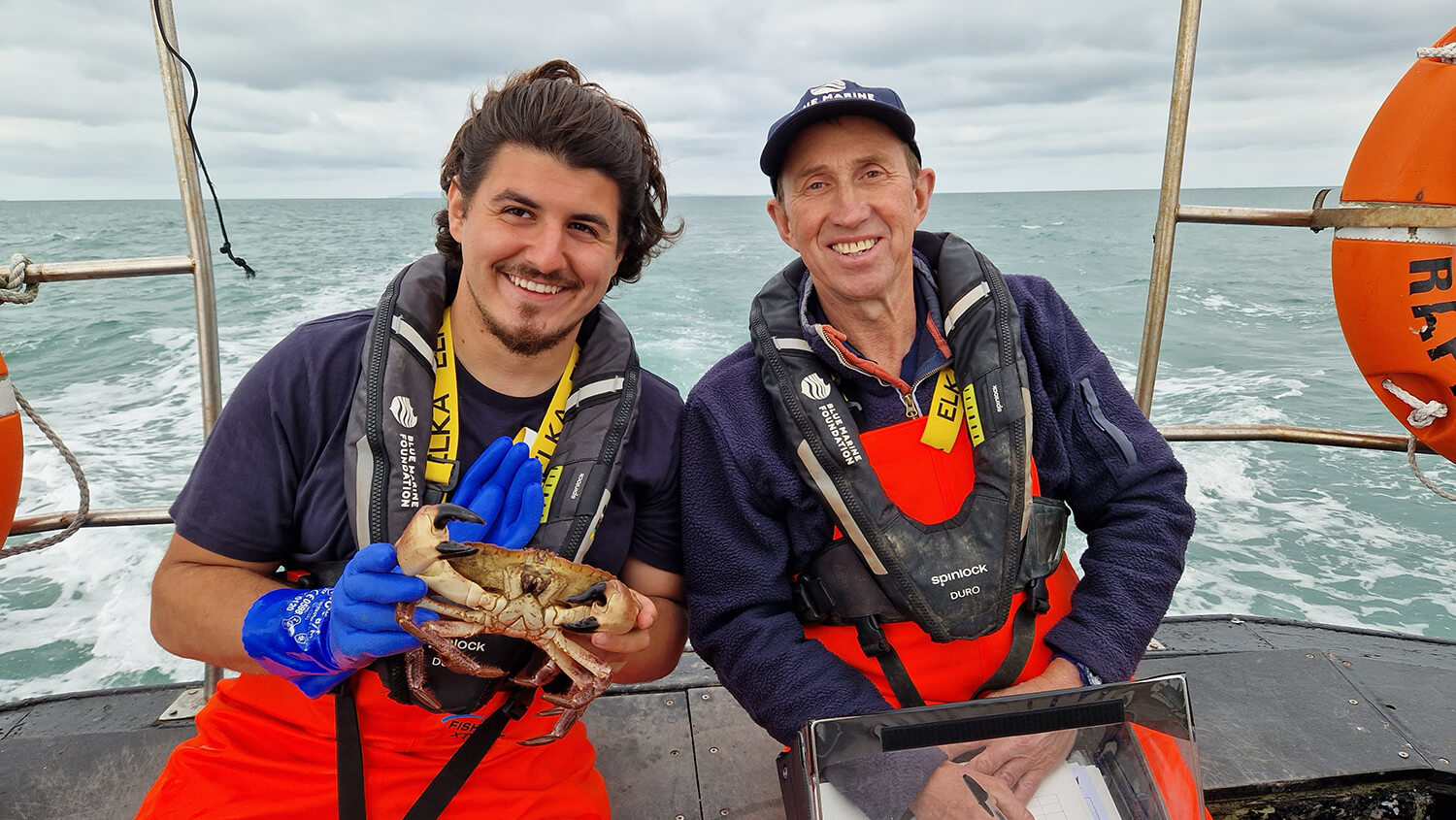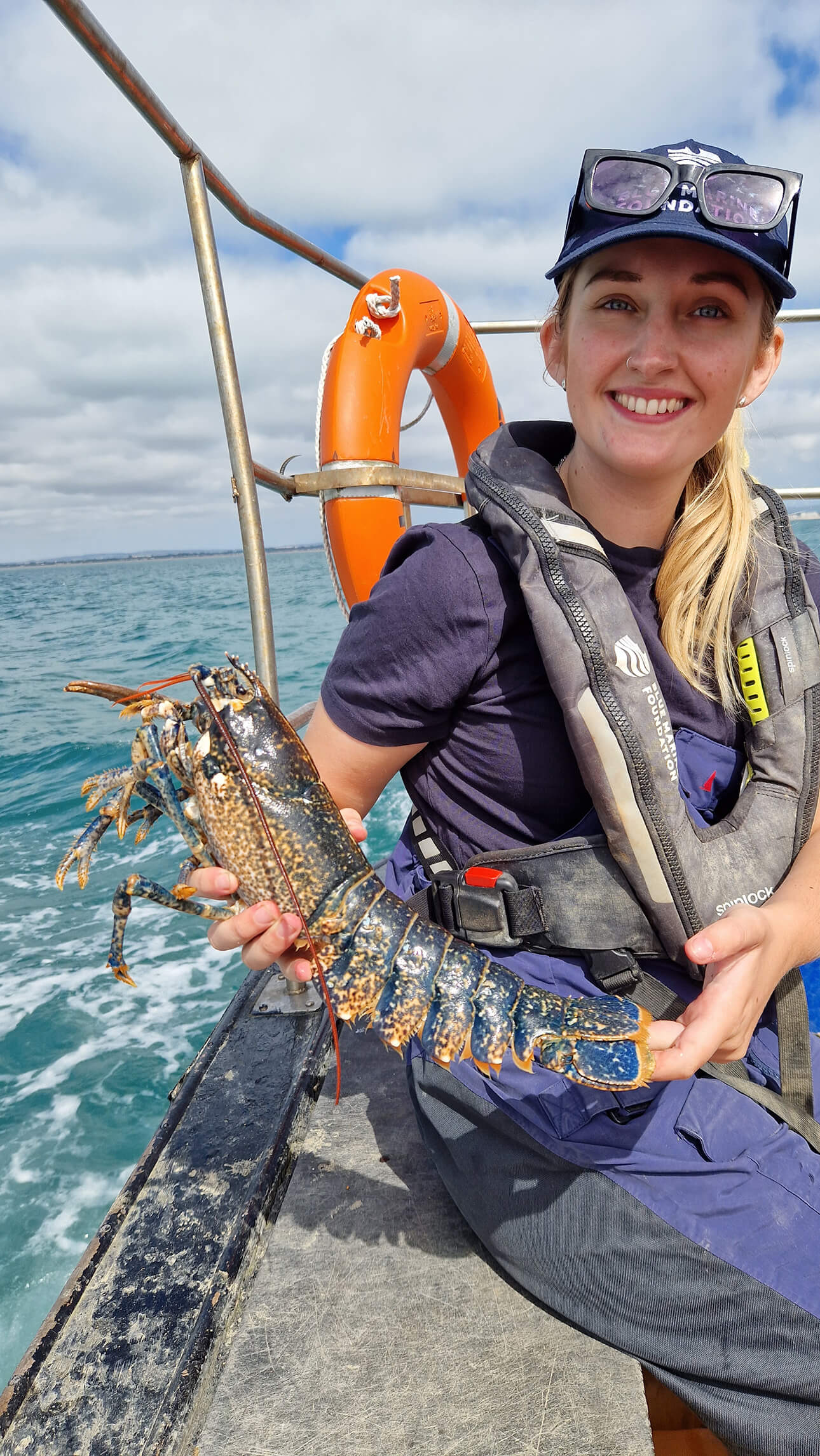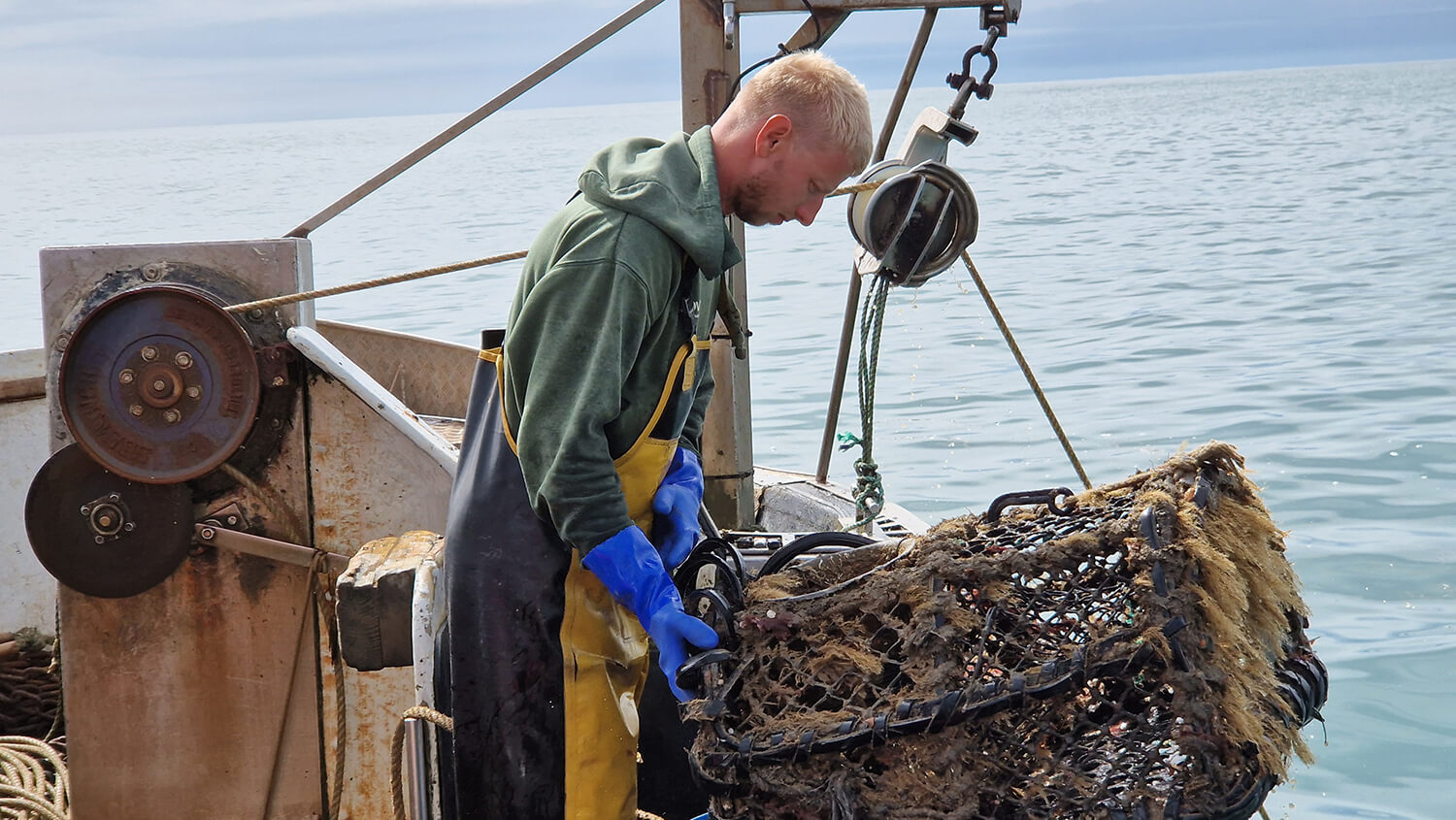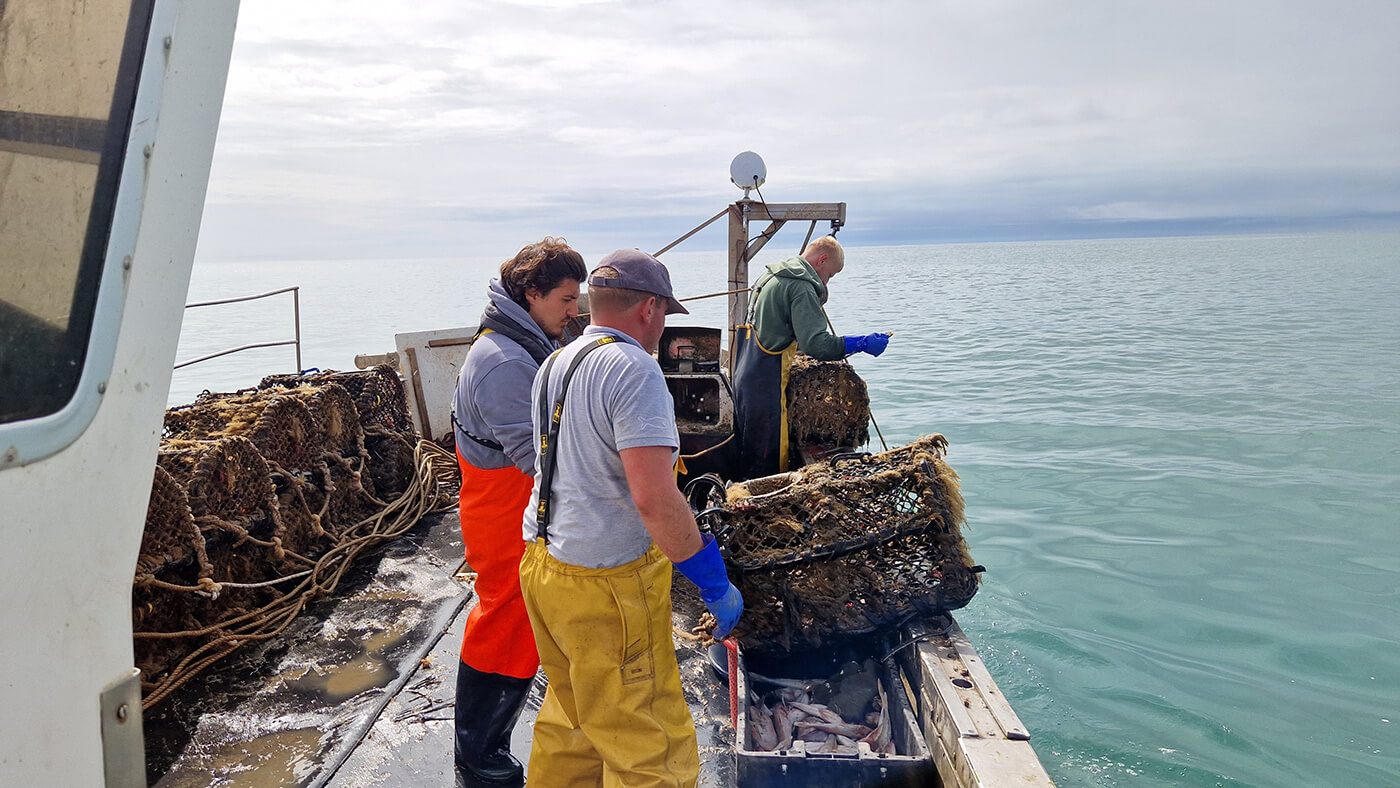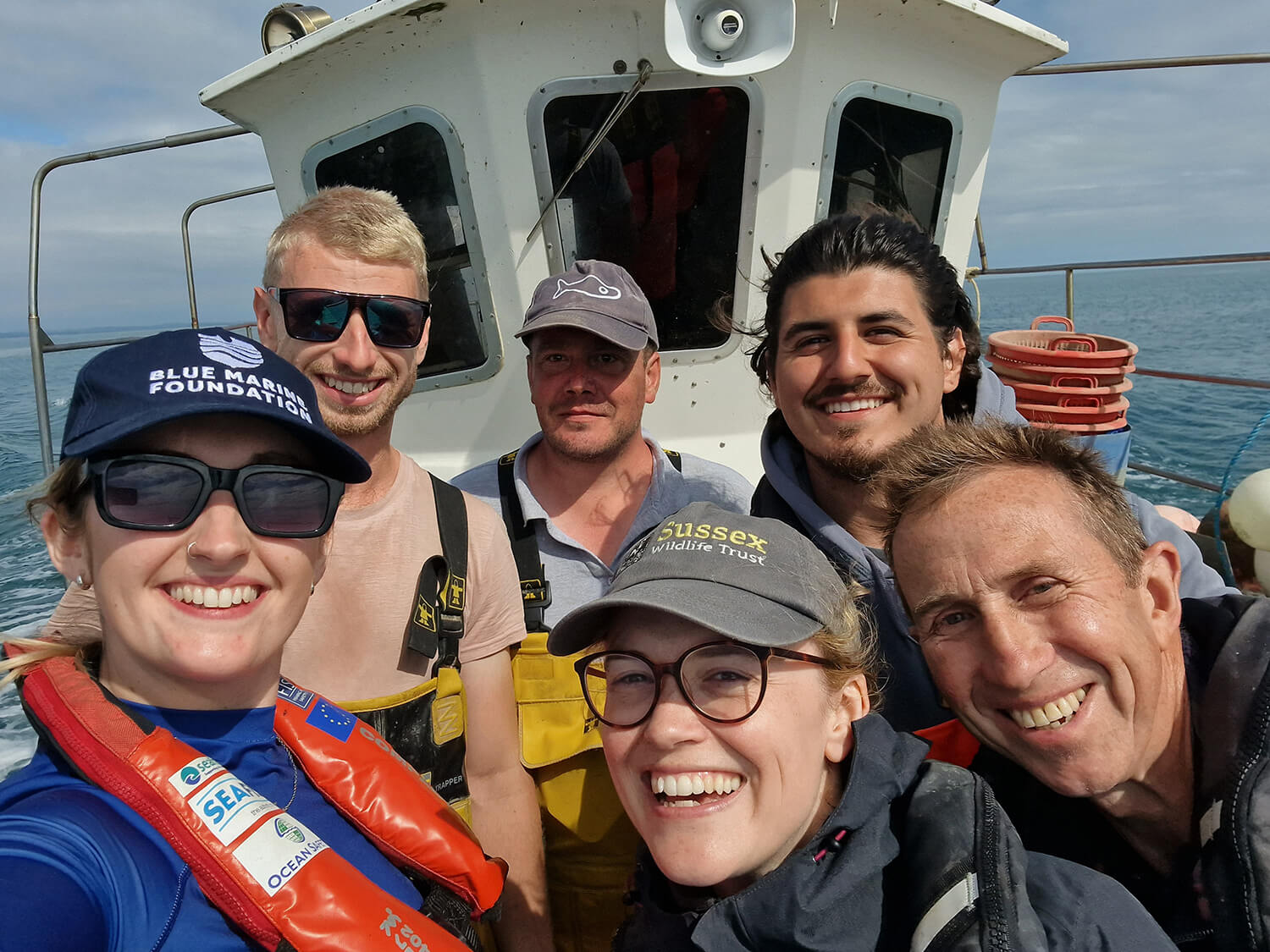esure Group supported 3 crab and lobster survey sites along the Sussex coastline in 2024
esure Group sponsored Sussex potting surveys to assess the impact of the Nearshore Trawling Byelaw on local crustacean fisheries, in partnership with GreenTheUK and Blue Marine Foundation. This report outlines the findings from the survey reports and includes data from esure Group’s survey sites.
Brighton sites 4 and 5, and Selsey site 3 were supported by esure Group.

Introduction
Sussex Bay was home to abundant kelp beds between Selsey and Shoreham-by-Sea. This biodiverse environment played a key ecological role, providing shelter, feeding, and nursery grounds for marine life, including commercially important crustaceans. This ecosystem faced drastic climatic and anthropogenic pressures. These included the Great Storm in 1987 which heavily impacted the kelp beds, and intensive fishing activity using heavy trawl nets (trawling), which, when dragged along the seafloor, can destroy seabed habitats. Therefore, recovery of this habitat was inhibited, resulting in 96 percent of the kelp beds in Sussex being lost by the end of the 1990s.
In 2015, an inshore habitat map commissioned by Sussex Inshore Fisheries and Conservation Authority (IFCA) showed how habitats in the area had changed and ignited discussions about kelp's role in the ecosystem. Over subsequent years, Sussex IFCA, who manage the area from the shoreline out to 6 nautical miles, created a compelling case for a new piece of legislation which aimed to protect essential fish and marine habitats and support sustainable inshore fisheries: the Sussex Nearshore Trawling Byelaw.
The Nearshore Trawling Byelaw (NTB) came into effect in March 2021, prohibiting trawling over 304 square kilometres of seabed. To understand the ecological, social, and economic value of kelp and the benefits of the Byelaw on kelp recovery, local inshore fisheries and the wider ecosystem, Blue Marine and partners of the Sussex Kelp Recovery Project have established an extensive monitoring and research programme.
Part of this research includes a long-term programme of potting surveys to understand the impact of the Byelaw on commercial crustacean fisheries, specifically European lobster (Homarus gammarus) and brown crab (Cancer pagurus) (also known as edible crab). The surveys commenced in August 2021, within six months of the introduction of the Byelaw, establishing a baseline against which future changes can be measured. This year, 2024, marks the fourth year of the potting survey.
Methodology
The potting survey, with the support of local fishermen, aimed to survey sites both within and outside the Nearshore Trawling Byelaw area (stated as “trawling exclusion zone” or “NTB” throughout the report) and obtain data on crab and lobster abundance, carapace size, weight, sex ratio, and condition. In Selsey, 12 were selected and surveyed annually from 2021 to 2024 (Figure 1). In Brighton, six sites were initially selected in 2022. In 2023, site selection was refined using fishermen's knowledge, expanding the number of surveyable sites to nine, which were then resurveyed in 2024 (Figure 1). In Eastbourne, six sites were surveyed in 2022 but were not repeated in 2023 or 2024 due to a combination of weather conditions and fishermen's availability. The sites surveyed throughout the monitoring period allowed the collation of a four-year dataset at Selsey and a two-year dataset at Brighton, where the effects of the Byelaw on crab and lobster populations could be monitored over time. The analysis undertaken in 2024 included Selsey data only with Brighton data analysis included in the appendices of the full report. A full list of the sites surveyed each year is summarised in Table 1.
To understand the effect of the Nearshore Trawling Byelaw on commercial crustacean species over time, the independent variables in this analysis were ‘Treatment’, split into two categories of ‘NTB’ and ‘Outside’ the trawling exclusion zone, and ‘Year’ (2021, 2022, 2023 and 2024) to analyse differences between years. Treatments were defined as:
- NTB: inside the trawling exclusion zone (Nearshore Trawling Byelaw area)
- Outside: outside the trawling exclusion zone (Open Control sites)
In order to see if there were any differences in crab and lobster population metrics inside and outside the trawling exclusion zone in 2024 across a wider area, the 2024 data from Selsey and Brighton was combined, and a second supplementary test for significant differences was completed (supplementary results in Appendices of full report).
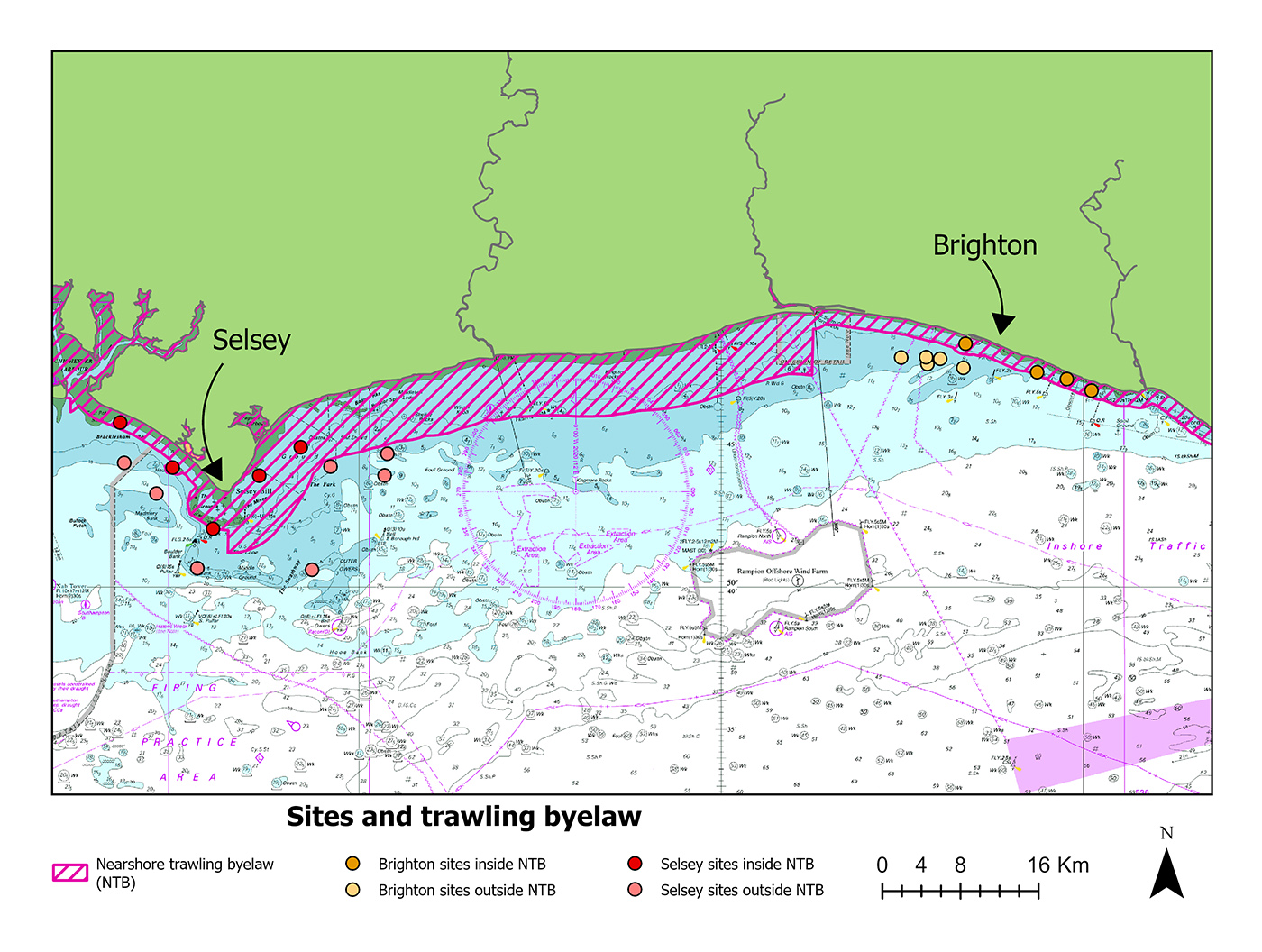 Figure 1: Survey sites used in data analysis across Selsey (2021 - 2024) and Brighton (2023 - 2024)
Figure 1: Survey sites used in data analysis across Selsey (2021 - 2024) and Brighton (2023 - 2024)
Table 1: Summary table of the number and location of sites surveyed in each year
| Year | Locations | Number of Sites Surveyed | Total no. of sites |
|---|---|---|---|
| 2021 | Selsey | 12 (5 Inside and 7 Outside) | 12 |
| 2022 | Selsey | 12 (5 Inside and 7 Outside) | 24 |
| Brighton | 6 (2 Inside and 4 Outside) | ||
| Eastbourne | 6 (2 Inside and 4 Outside) | ||
| 2023 | Selsey | 12 (5 Inside and 7 Outside) | 21 |
| Brighton | 9 (5 Inside and 4 Outside) | ||
| 2024 | Selsey | 12 (5 Inside and 7 Outside) | 21 |
| Brighton | 9 (5 Inside and 4 Outside) |
Key findings
Overall, the results from the four-year dataset at Selsey showed that there were no significant differences in crab or lobster population metrics between inside and outside the trawling exclusion zone or between the years of 2021, 2022, 2023 and 2024. This is expected, given that this survey was undertaken only three years and five months from when the Nearshore Trawling Byelaw was designated.
The results from Selsey show a gradual increase in lobster abundance over the three years in both treatments between 2021 and 2023, and a slight decrease in 2024 (Figure 2).
In Selsey, brown crabs' abundance has shown a gradual decrease from 2021 to 2023 and then an overall increase in 2024 (Figure 3).
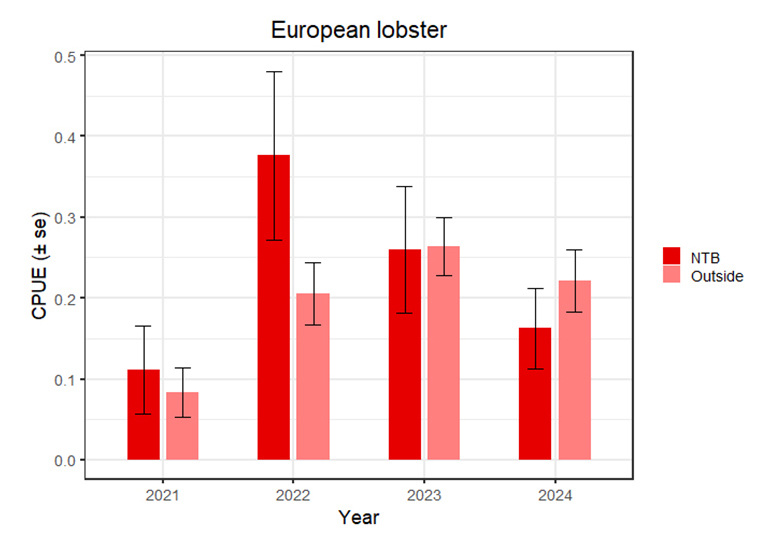 Figure 2: Mean abundance of European lobster caught inside and outside the trawling exclusion zone, from 2021 to 2024
Figure 2: Mean abundance of European lobster caught inside and outside the trawling exclusion zone, from 2021 to 2024
 Figure 3: Mean abundance of brown crab caught inside and outside the trawling exclusion zone, from 2021 to 2024
Figure 3: Mean abundance of brown crab caught inside and outside the trawling exclusion zone, from 2021 to 2024
Brown crabs and European lobsters' conditions have fluctuated throughout time, but for both species the average condition of an individual was nearly always better inside than outside, with lobster conditions in 2022 being the only exception (Table 2).
Table 2: Average condition index of brown crabs and European lobsters in Selsey
| Year | Brown Crabs | European Lobsters | ||
|---|---|---|---|---|
| NTB | Outside | NTB | Outside | |
| 2021 | 4.59 | 4.34 | 4.92 | 4.80 |
| 2022 | 3.90 | 3.68 | 4.70 | 4.79 |
| 2023 | 4.00 | 3.95 | 5.00 | 4.70 |
| 2024 | 4.50 | 4.33 | 4.56 | 4.45 |
Despite not being significant, another notable trend seen at Selsey is the higher number of small lobsters (below Minimum Conservation Reference Size) inside the trawling exclusion zone across the four years (Figure 4). This could potentially suggest that the exclusion zone is providing shelter and nursery grounds for juvenile individuals.
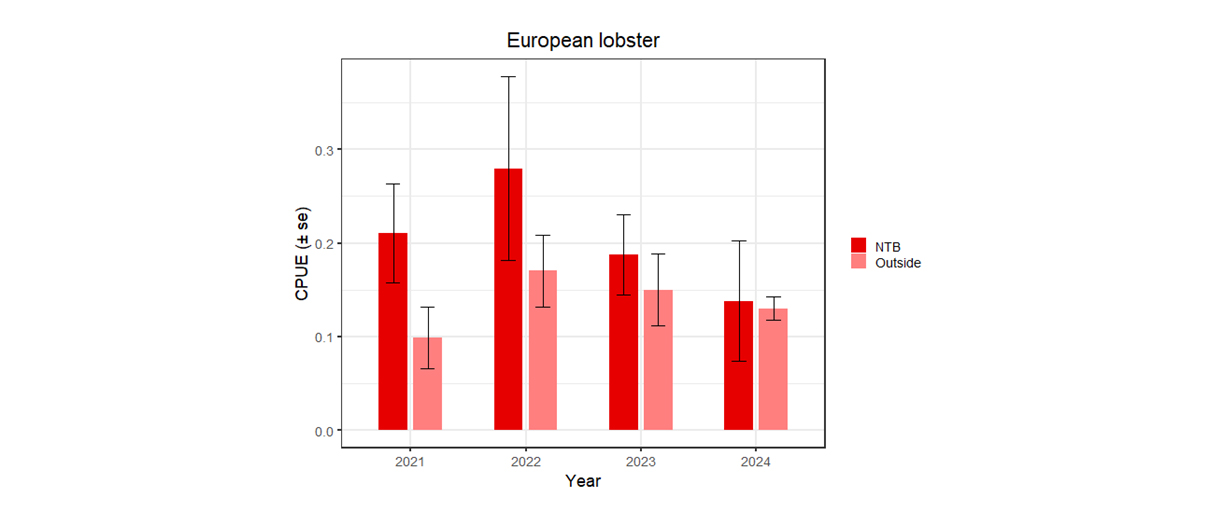 Figure 4: Mean abundance of European lobsters below MCRS inside and outside the trawling exclusion zone between from 2021 to 2024 at Selsey
Figure 4: Mean abundance of European lobsters below MCRS inside and outside the trawling exclusion zone between from 2021 to 2024 at Selsey
A more diverse bycatch was caught outside the trawling exclusion zone compared to inside, with velvet swimming crabs being the most common bycatch species in both areas (Figure 5). Bycatch is presented in Table 3.
 Figure 5: Bycatch caught in 2024 at Selsey A) inside (NTB) and B) outside the trawling exclusion zone
Figure 5: Bycatch caught in 2024 at Selsey A) inside (NTB) and B) outside the trawling exclusion zone
Table 3: Bycatch species identified during survey in 2024
| Common Name | Latin Name | Picture of Species |
|---|---|---|
| Ballan Wrasse | Labrus Bergylta |  |
| Conger Eel | Conger Conger | 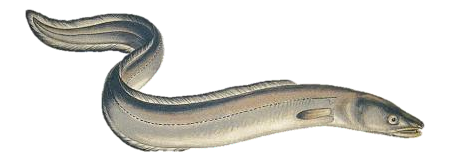 |
| Green Sea Urchin | Psammechinus Miliaris | 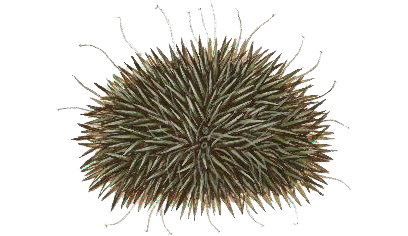 |
| Hairy Crab | Pilumnus Hirtellus | 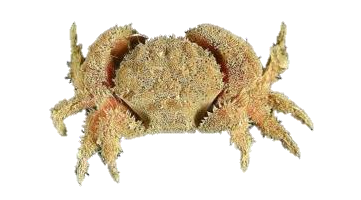 |
| Hermit Crab | Pagurus Bernhardus |  |
| Velvet Swimming Crab | Necora Puber | 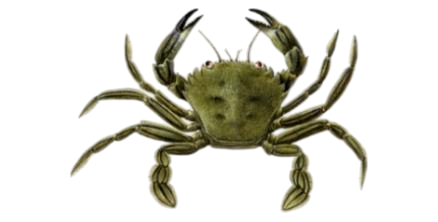 |
| Whelk | Buccinum Undatum | 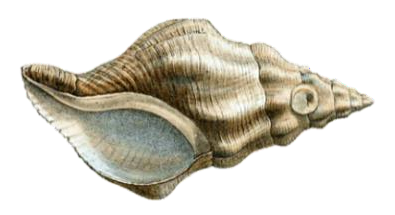 |
Conclusion and Recommendations
The pot fishery survey completed in August 2024 was conducted three years and five months after the designation of the Byelaw. As this data is part of a long-term study, it is still too early to make solid conclusions on the impact of the Nearshore Trawling Byelaw on brown crab and European lobster fisheries. However, it is expected, as evidenced in other areas where trawling is removed, that as the kelp beds and other habitats recover, crab and lobster populations will increase in number, there will be a greater number of larger mature individuals and juvenile individuals, and individuals caught would be in better condition. Although it is yet to be demonstrated through scientific research, there is an increasing amount of anecdotal evidence of marine wildlife recovery.
In 2025, with continued engagement with Sussex's fishing fleet, Blue Marine Foundation aims to repeat the survey at the same sites surveyed in previous years. It will be important to incorporate local fishermen's knowledge of the trends observed throughout the year, including abundance and condition of the species caught or environmental variables, such as the level of sedimentation. These observed trends will build our understanding of any additional factors which could prevent the recovery of these species. Additional research into the impact of sediment on the recovery of kelp and crustaceans would also complement the study.
Thank you esure Group for sponsoring this important work and making a commitment to marine biodiversity research.
Acknowledgements
Blue Marine and GreenTheUK would like to extend a huge thank you to the skippers, crew and individuals who assisted with these surveys.
Research assistants: Andrew Woods (Blue Marine Foundation), Emma Nicol (Blue Marine Foundation), George Short (Sussex Wildlife Trust) and Ella Garrud (Sussex Wildlife Trust).

UN's Sustainable Development Goals
As a GreenTheUK partner, you support projects that are in line with the UN Sustainable Development Goals.

Take urgent action to combat climate change and its impacts.

Conserve and sustainably use the oceans, seas and marine resources for sustainable development.



